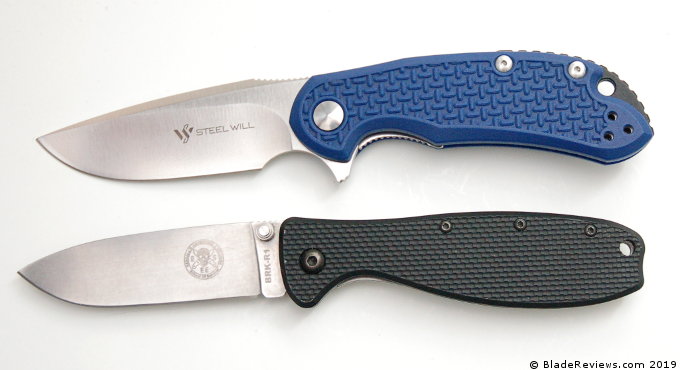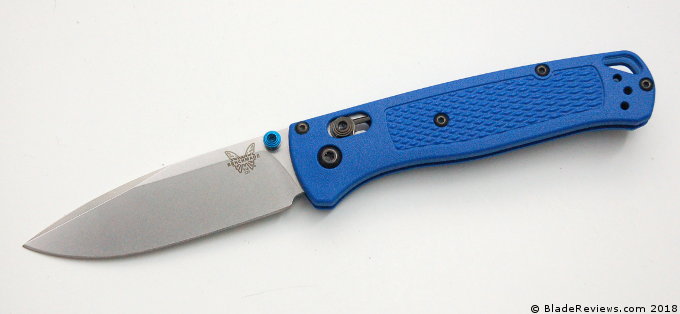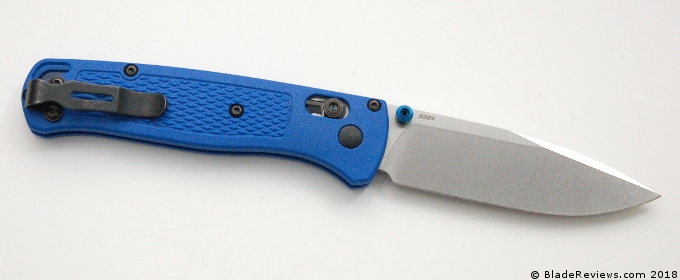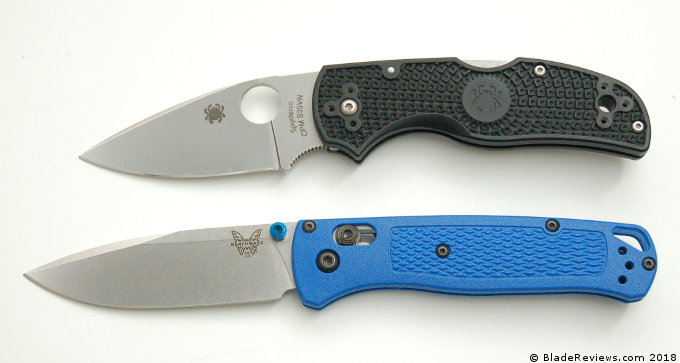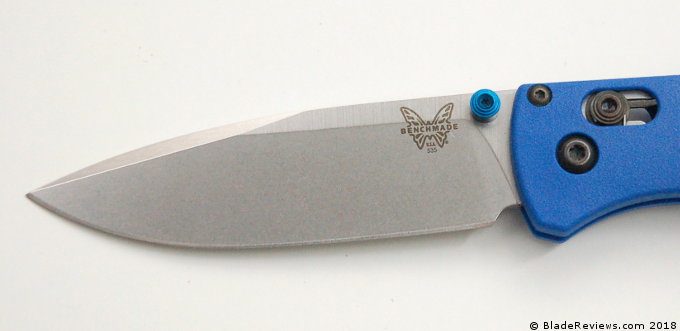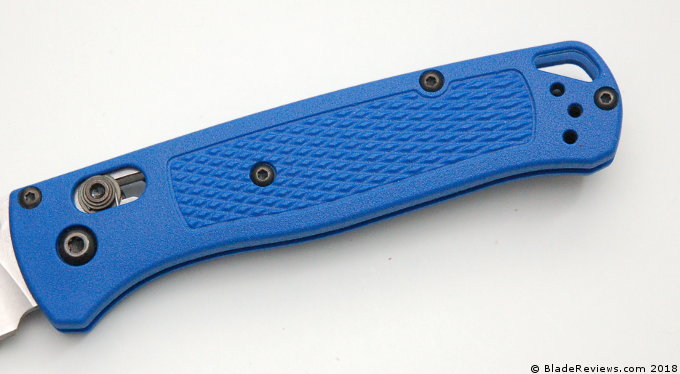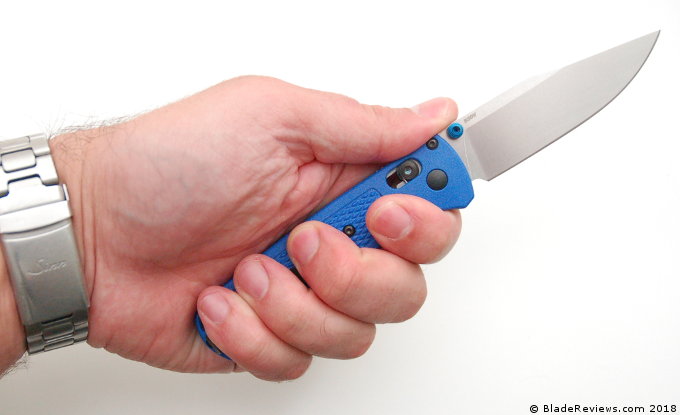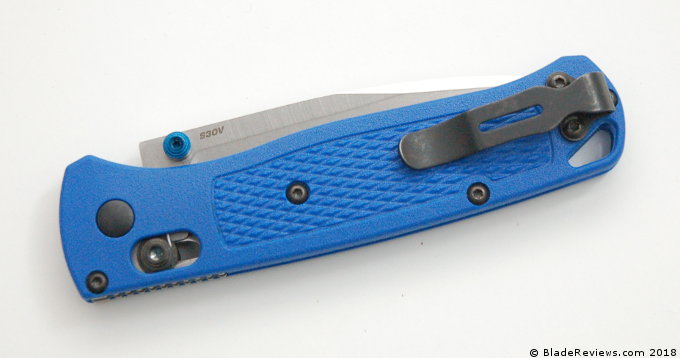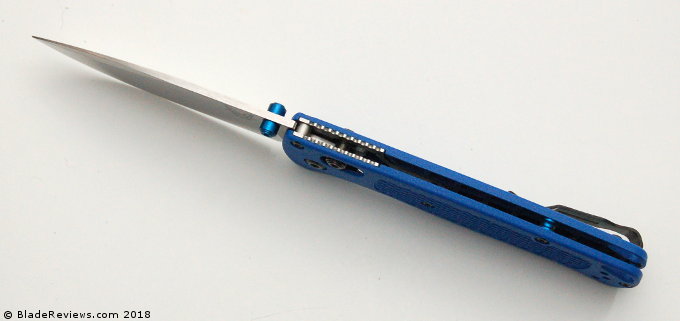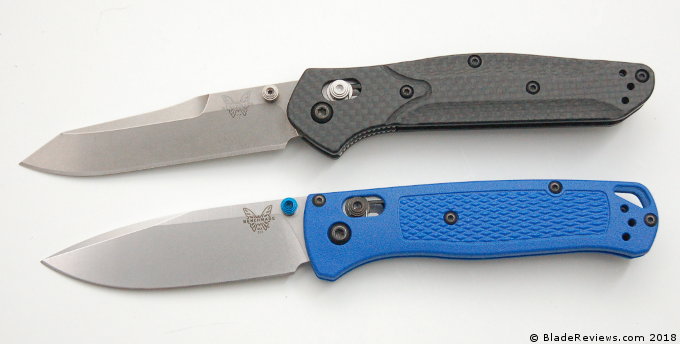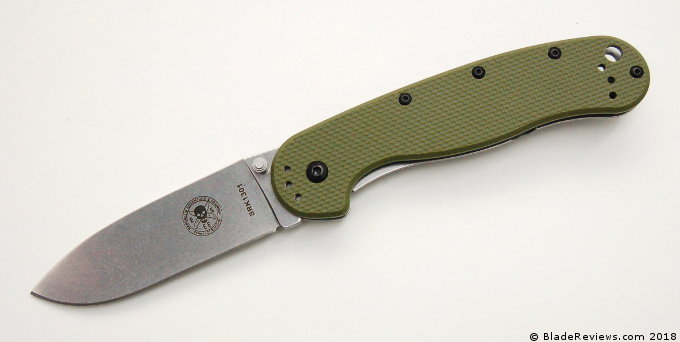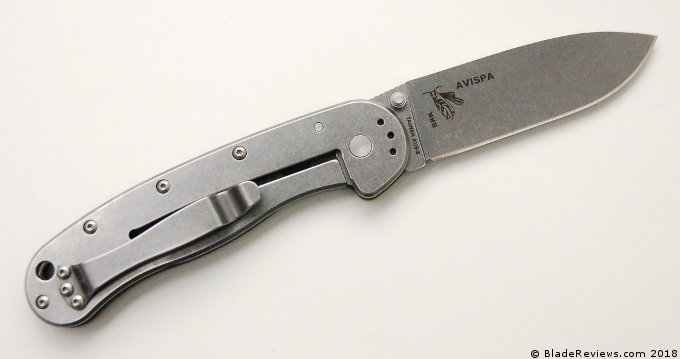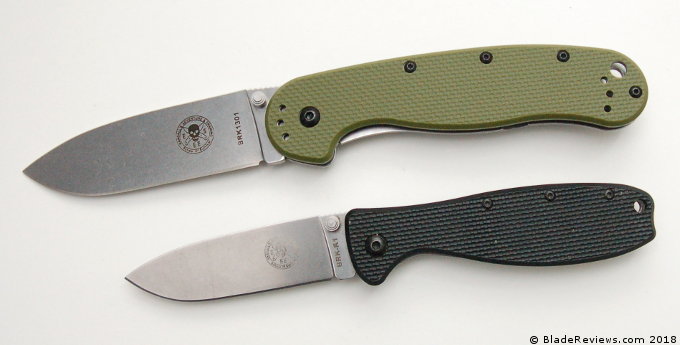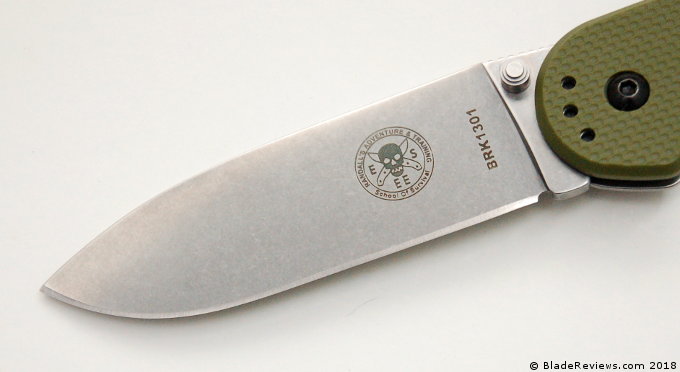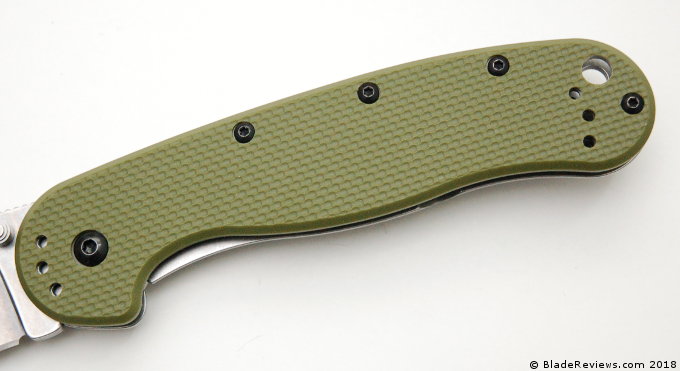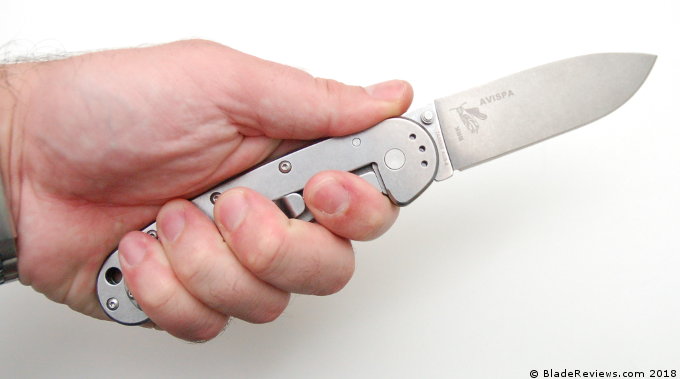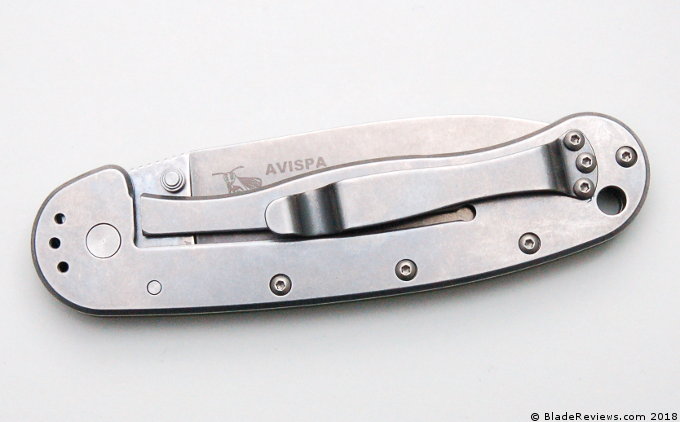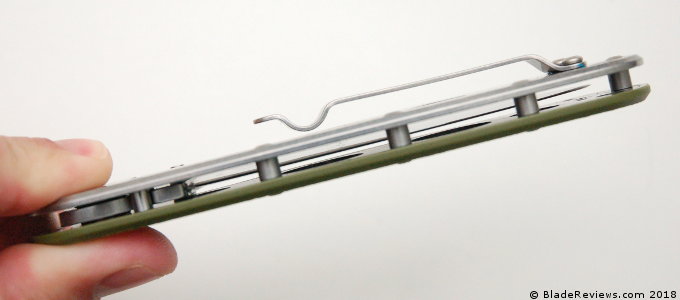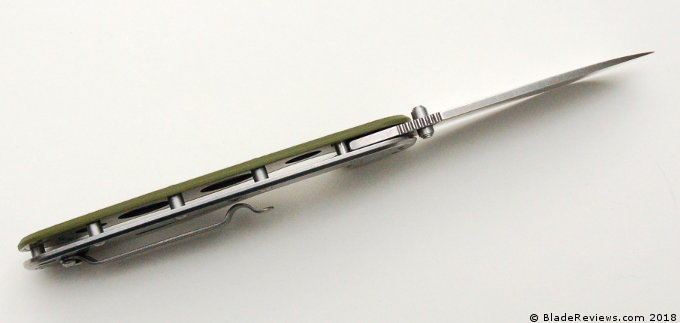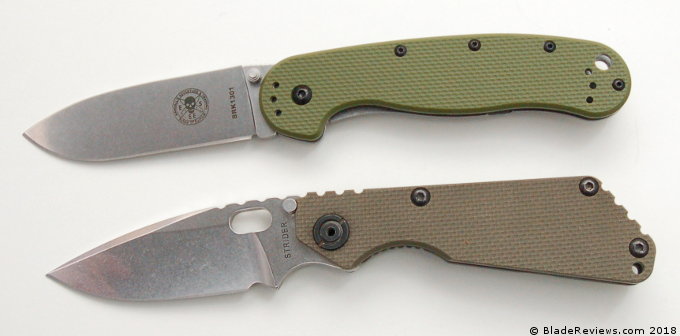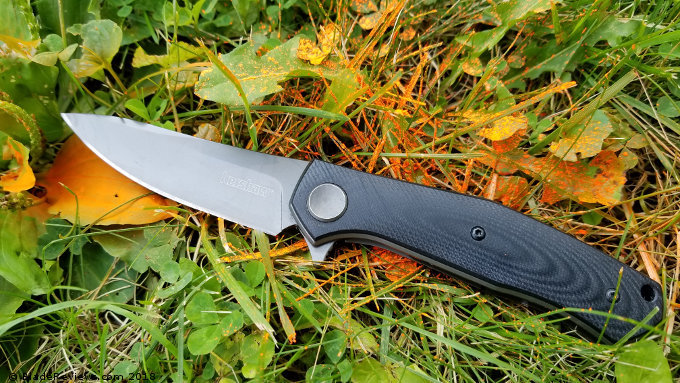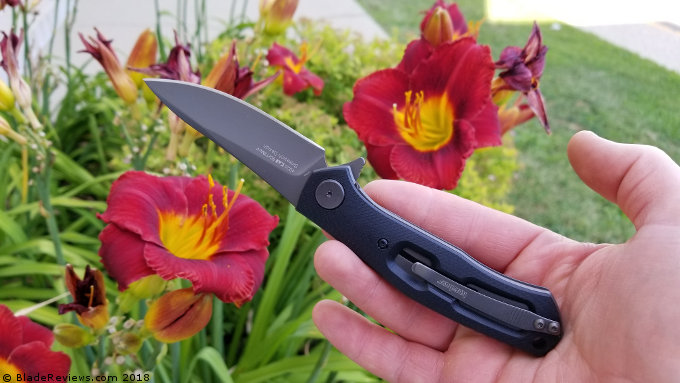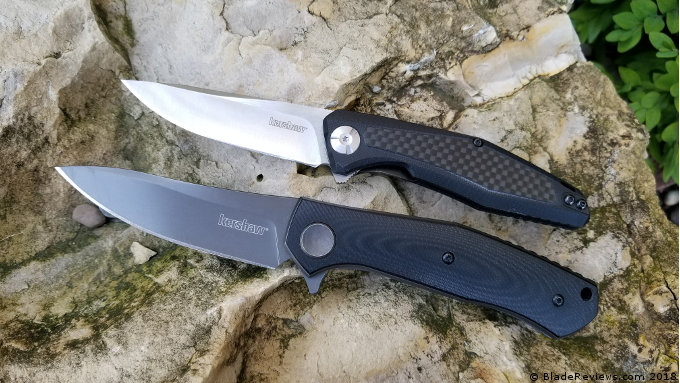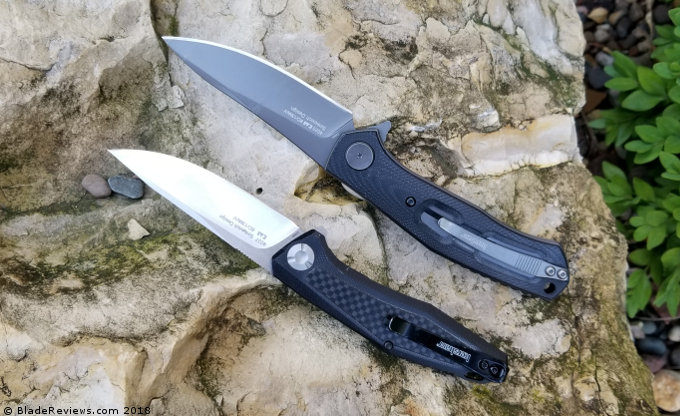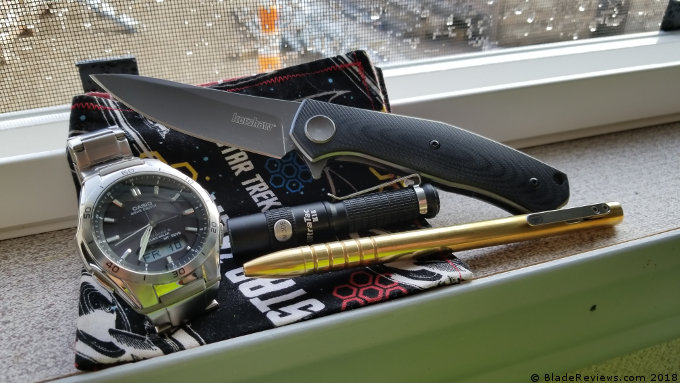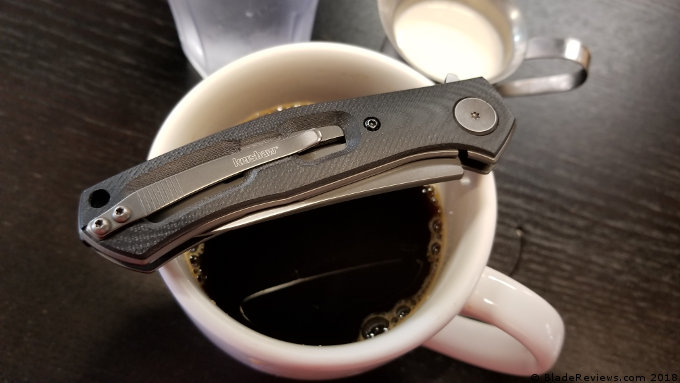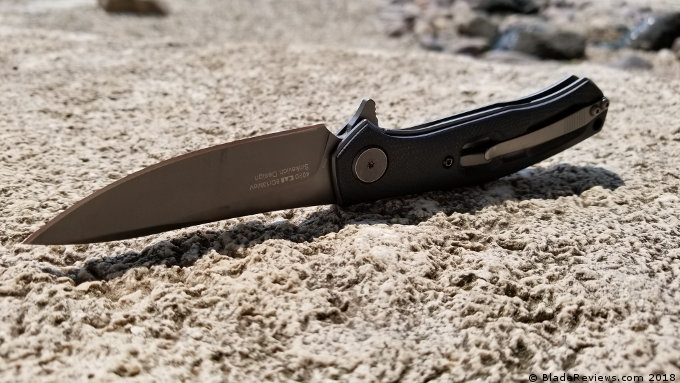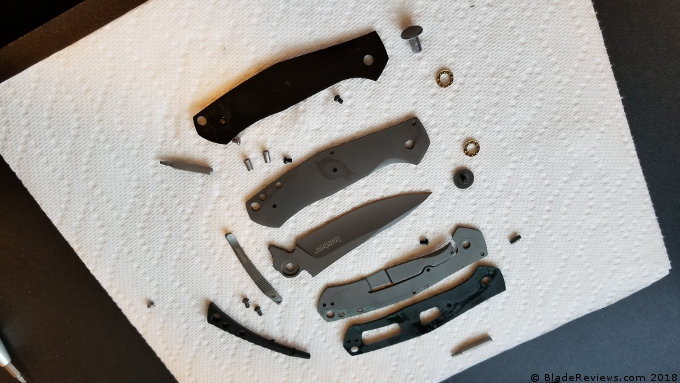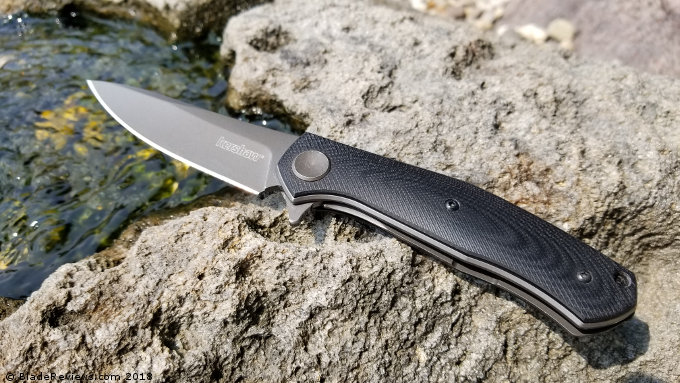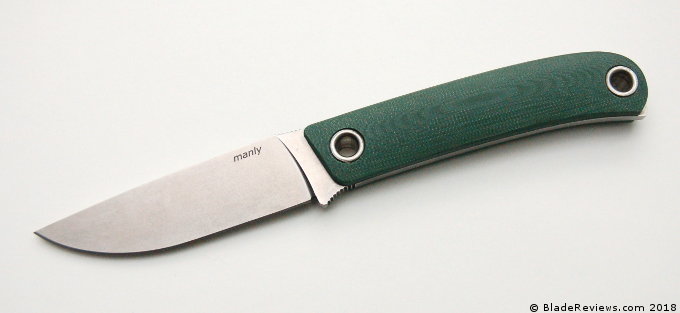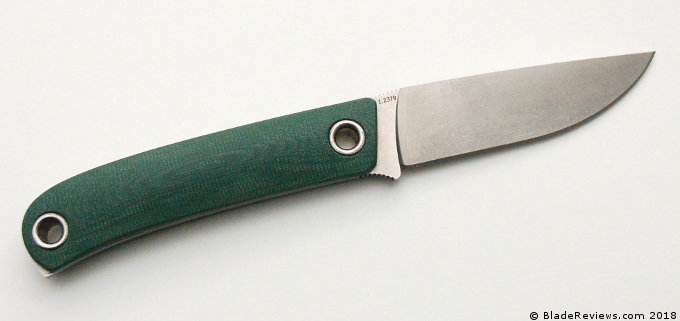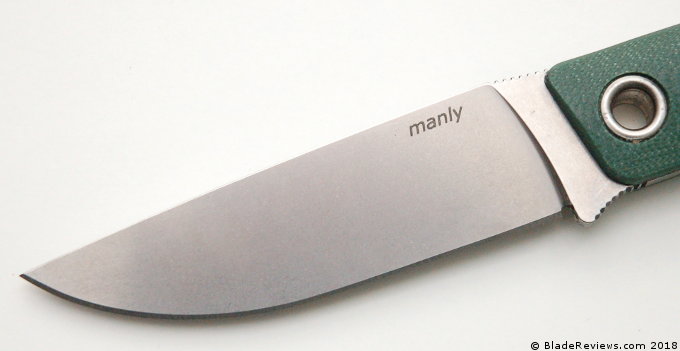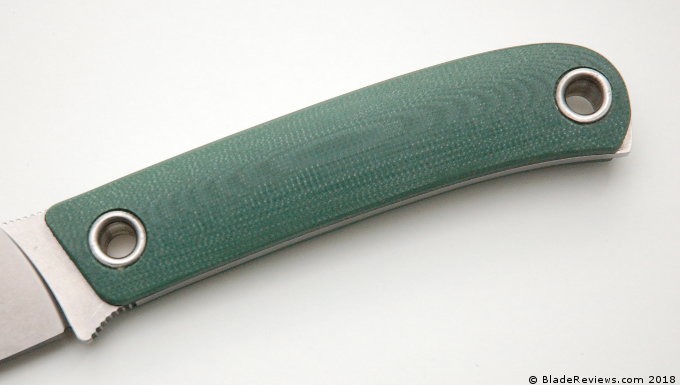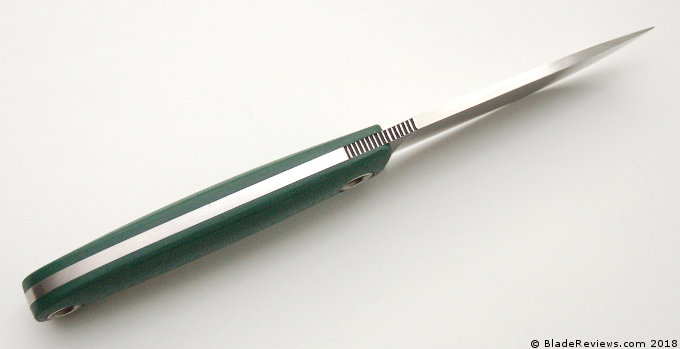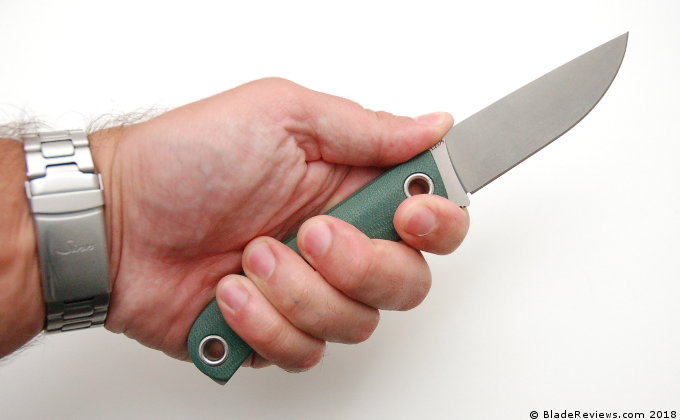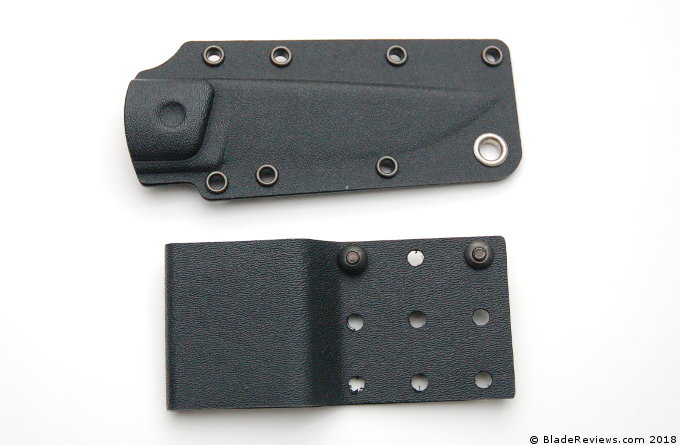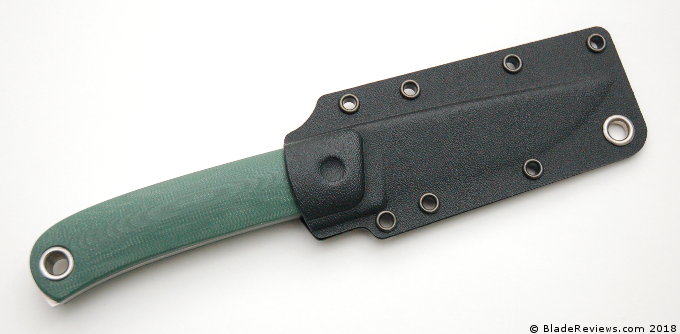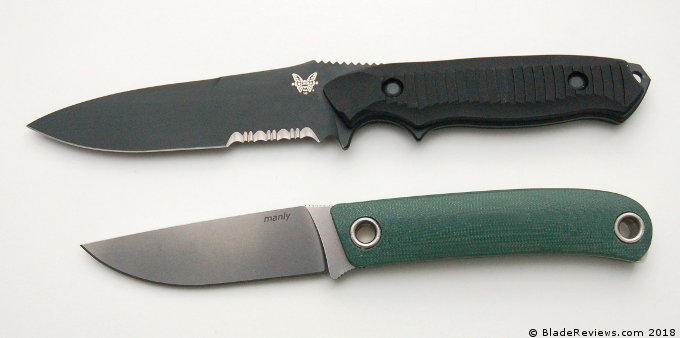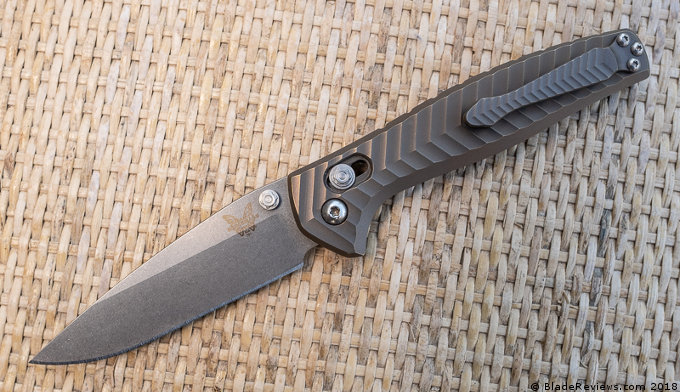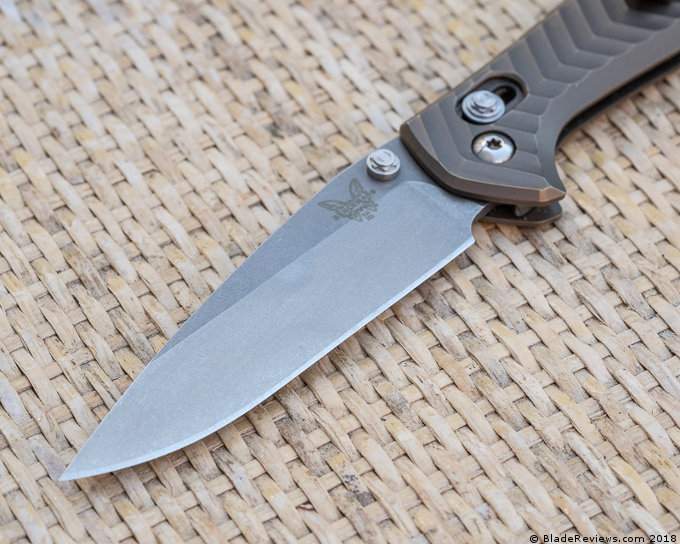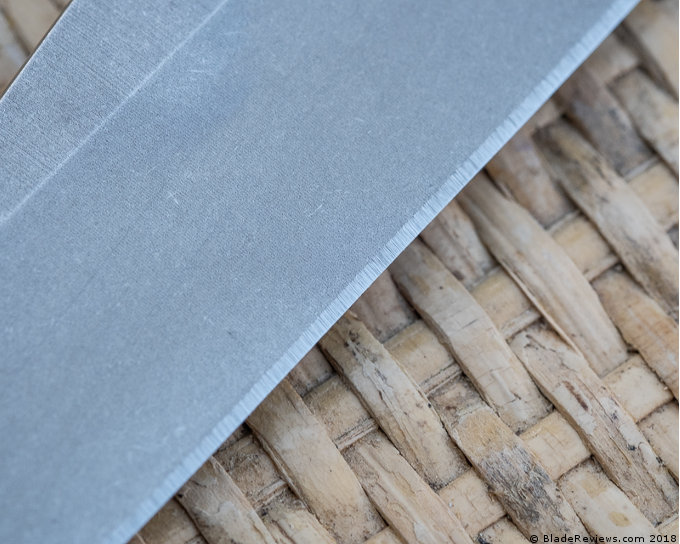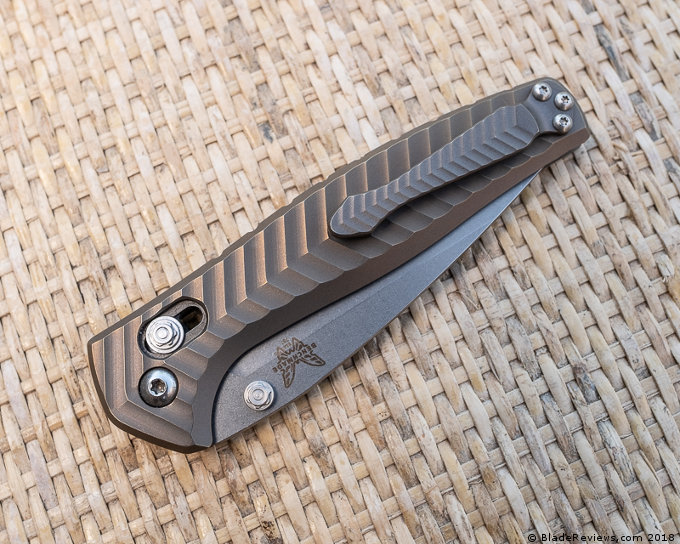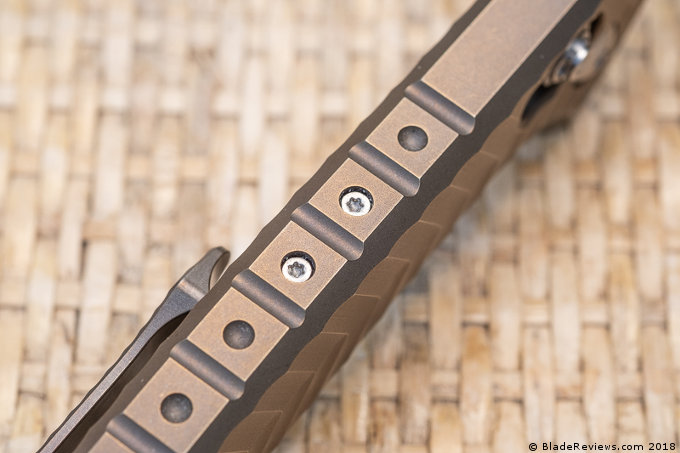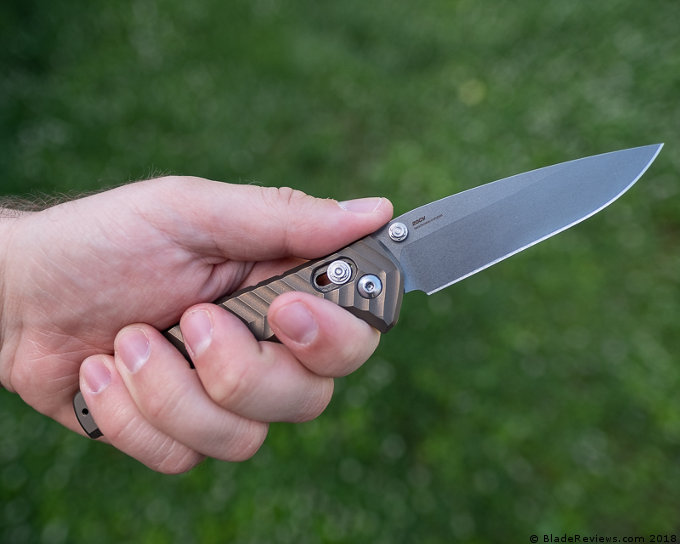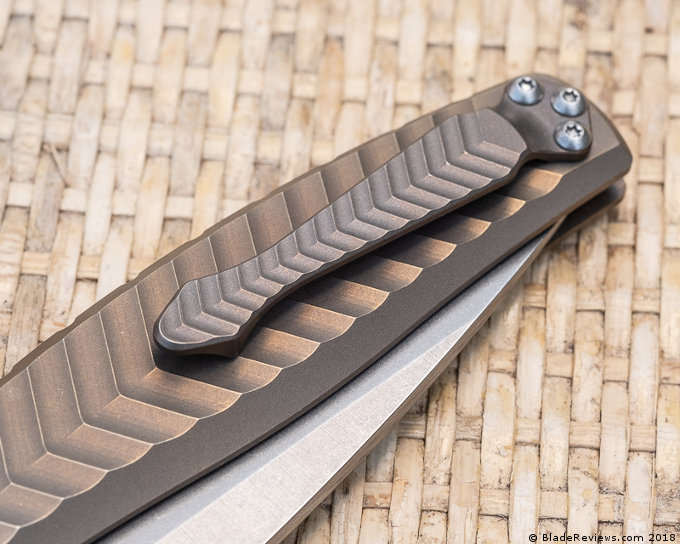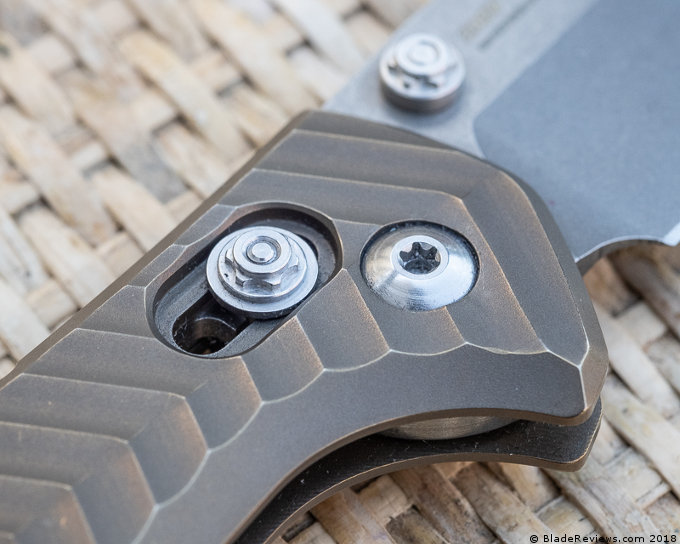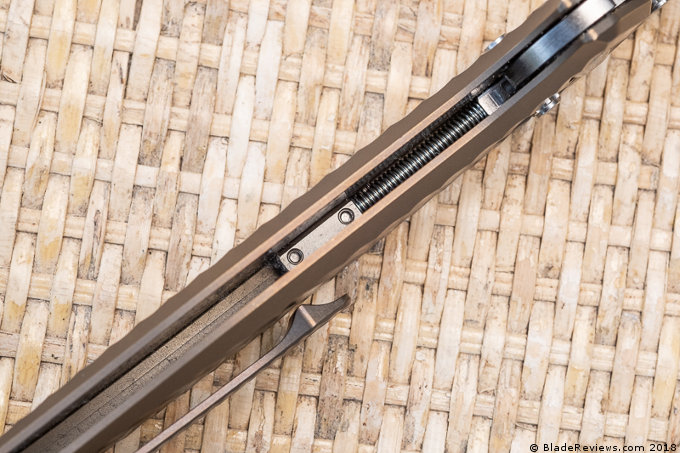When you look over the the stuff I reviewed last year, it’s a lot of high end pieces. With all that titanium and carbon fiber, you would think I’ve lost touch with the budget knives. In fact, when Travis wrote in his review of the Hogue OTF that the knife was expensive, a commenter said that it’s “Weird BladeReviews would call a $229 knife expensive!”
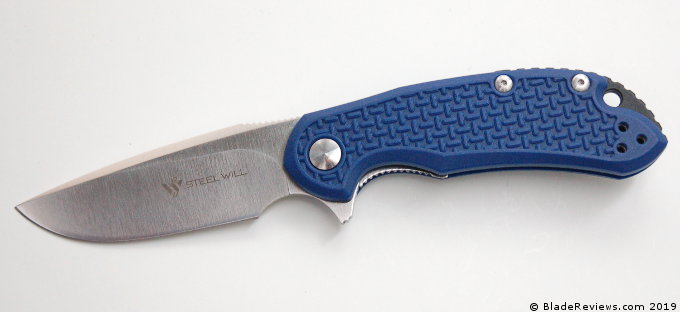
Buy the Steel Will Cutjack at BladeHQ
In a way that comment warms my heart, because this is a true enthusiast’s site and we have dived deep into all sorts of high end knives here. I’ve personally purchased and reviewed so many expensive knives that a $229 knife amounts to a rounding error. I probably have $229 in knives lost in my couch cushions. One time I wiped my ass with a $229 knife. Not really, but you get the point. I have a problem. That’s part of the reason why I use a penknife name.
But in another way, it shows I may have been focusing a little too much on the higher end of the hobby. $229 is an expensive knife for a lot of people, including myself, and the hobby isn’t only about buying expensive knives. At the end of the day I use a lot of my knives, and the knives I tend to keep are users. The pocket frosting is what typically gets sold off.
I’m still interested in budget pieces, but I pick them carefully. Rather than review every single Chinese made Kershaw that comes out, I’d rather review stuff that interests me. Not all the budget stuff interests me.
But sometimes you can find cool knives for not a lot of money. The Steel Will Cutjack is one such candidate. When Steel Will came onto the scene a few years ago I wasn’t that interested. Most of their knives were plastic handled fixed blades, and I wasn’t that excited.
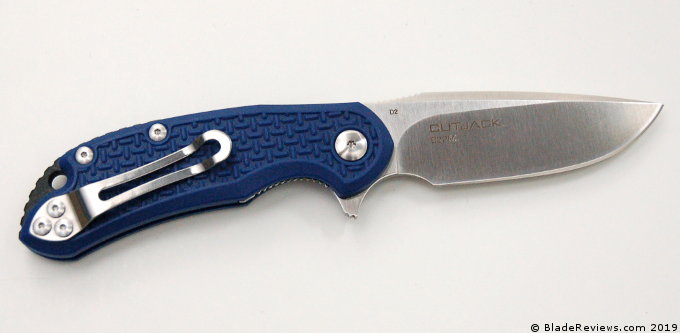
I believe their first folder was the Gekko. A sleek Italian made piece retailing for around $150. Nice knife, but I wasn’t ready to pay $150 for it.
I sort of lost sight of the brand at that point, but Steel Will continued to blaze forward with new designs and at different price points. Their stuff earned a following and the Cutjack kept popping up again and again. It slowly crystalized in my subconscious until it eventually found itself at my door step. Ok, maybe an Amazon shopping list and credit card were involved, but for $40 I didn’t think too hard about it. This is BladeReviews after all.
General Dimensions and Blade Details
The Cutjack has an overall length of 7″, a 3″ blade, and weighs 3.01 ounces. The knife is made in China, although it’s interesting to note I don’t see “China” anywhere on this knife or in the packaging. The Cutjack is firmly marketed as an EDC knife and is part of Steel Will’s “Urban” series. Originally when I wrote this review I though I had the regular Cutjack, but turns out this is the mini version. It’s a good size for EDC. Lightweight and easy to pocket. If you want something bigger, Steel Will offers a full size Cutjack with a 3.5″ blade and overall length of 8″.
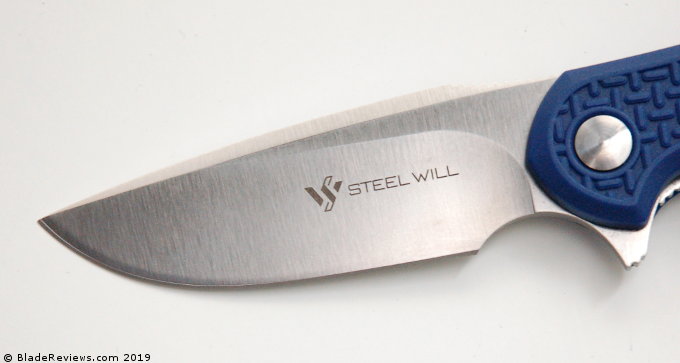
The Cutjack’s blade is a riff on the modern drop point. The swooping belly compliments the curvy backside of the handle. There is a long lean swedge that runs the entire length of the blade. A high flat grind and satin finish lend a smart look to the knife. One thing to note is the edge on my knife is almost perfectly even. For a $40 folder I’m impressed, as it’s tough to find a perfectly even edge on any production knife.
Steel Will selected D2 steel for the blade. An interesting choice, as D2 has a reputation for being semi-stainless and a bit of a bear to maintain, unless you by a knife made by Bob Dozier. But this isn’t a Bob Dozier knife. When I think “D2” I think of the Benchmade 710. Great knife, but a bitch to sharpen. For this reason I wasn’t sure about a budget knife in D2 steel. At least it would give me something new to write about. Writing countless reviews of knives in Aus8 and 8Cr13MoV has worn a permanent groove in my brain. But D2 in a budget blade. That’s something different.
Here is a size comparison with the Benchmade Bugout. Buying lots of blue knives lately…
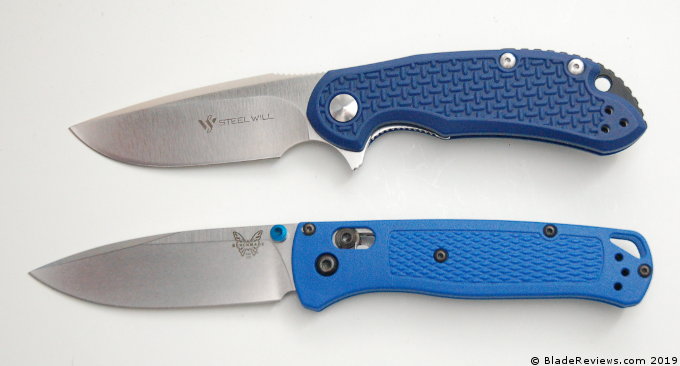
So I put the Cutjack through its paces. I’m writing this review after the holidays, so this knife has gone through an impressive quantity of cardboard. I’ve used it quite a bit in the kitchen as well. Cutting fruit and cheeses in place of a paring knife. I’ve had a chance to sharpen it on my Spyderco Sharpmaker a few times to maintain the edge. The D2 blade has held up great. No staining at all, easy to sharpen, and it has held a good edge. Hard to believe it’s actually D2 with performance like that, but I’m not complaining.
Handle, Ergonomics and Pocket Clip
The Cutjack’s handle is FRN scales over stainless steel liners with a high density plastic backspacer. This is similar to what you would find on a Delica. In practice the FRN plastic handle scale isn’t quite as heavy as what you find on a Japanese Spyderco, but it’s pretty nice. In fact the handle is surprisingly nice and well constructed. All the parts line up, the steel liners have been skeletonized, and there is custom hardware for the body screws and pivot. For $40 this is great.
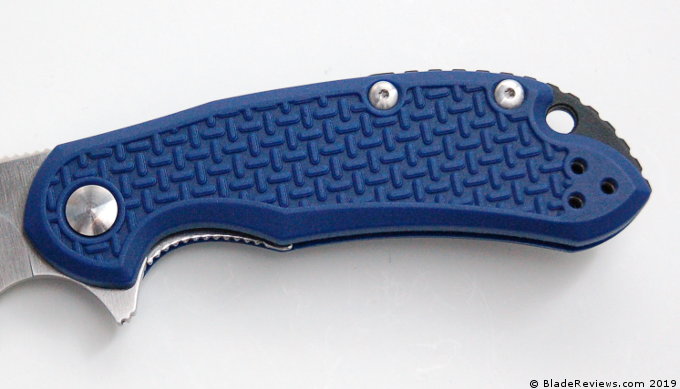
I will say that the inside edges of the handle are all a little sharp. Some ultra fine sandpaper would take care of that. Beyond those sharp edges, there is little to grouse about when it comes to the Cutjack’s handle construction.
How does it feel in hand? Well, some of the inside edges are a little sharp as I’ve mentioned, but on the all the handle is comfortable. Plenty of room for a 4 finger grip, whether you are choking up on the forward finger choil, or laying back in the cut. As far as traction is concerned, there is no lack of texture on this knife. The thumb ramp is finely jimped, the backspacer is a big toothy geared affair, and the handle scales themselves have a pleasant woven texture to them. Not as grippy as Spyderco’s bi-directional texturing, but it gets the job done.
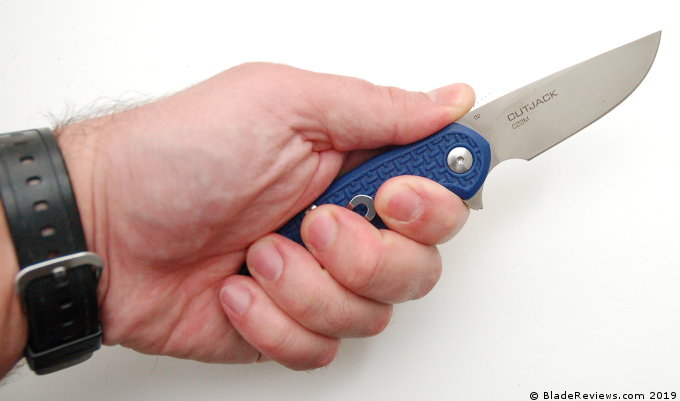
In practice the Cutjack feels good in hand and I’ve had no issues breaking down boxes, slicing fruit, and doing some light carving to get a campfire going in my back yard.
The pocket clip is a silver spoon style clip. It buries the knife deeply, but isn’t a low rider clip. All in all I think it’s a good clip. It has good retention, keeps the knife tucked away, and the handle is drilled and tapped for ambidextrous tip up carry.
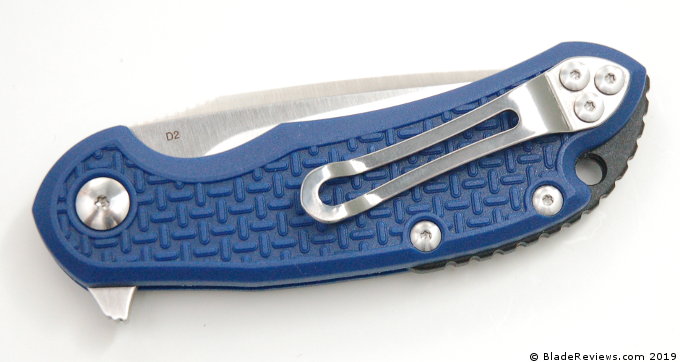
The Cutjack carries well. It’s neither ultra thin nor ultra light, but it is passably thin and passably light. It’s the kind of knife that I quickly forget I’m carrying until the anointed time arrives and I need to produce a pocket knife. The Cutjack earns strong marks for its practical carry clip and easy pocktability.
Deployment and Lockup
When I look at my list of best budget EDC knives, I notice only the Kershaw Skyline is a flipper. And the Skyline isn’t a great flipper when we think about modern flipping knives. It was designed before the renaissance in flipper folders.
The only knife that comes to mind as a great sub $40 flipper is the excellent CRKT Swindle. Could the Cutjack join the ranks? I think it’s possible. However, the flipping action of the Cutjack isn’t as good as the Swindle. The Cutjack uses phosphor bronze washers rather than bearings, and the detent isn’t as crisp on the Cutjack. But it’s still pretty good. I’d put the action around a “5” on the 0-10 scale. It’s not bad, but it’s not going to come close to the feel of a Zero Tolerance flipper or even the Swindle.
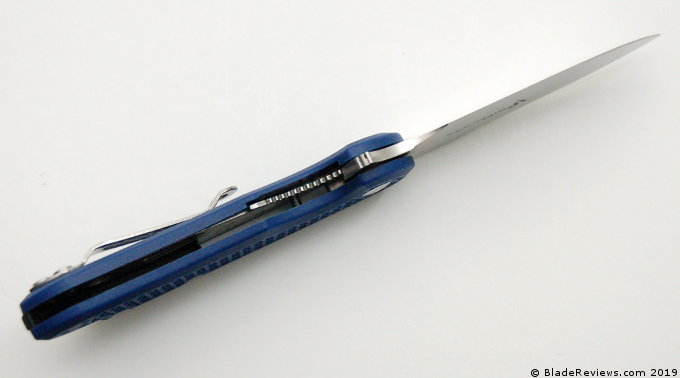
For lockup we have a stainless steel liner lock. Lockup is pretty good. I have a little side to side wiggle. Nothing crazy, but it’s there. I tried tightening the pivot, which removed the blade play but made the blade impossible to flip open. No up and down play at least. Lockup is fully engaged but is still early. The lockbar is jimped and easy to get at when it’s time to close the knife.
Blade centering is perfect on my knife. That is always nice to see. Here is a parting shot with the Cutjack next to the ESEE Zancudo:
Steel Will Cutjack Review – Final Thoughts
The Cutjack is pretty damn good for the money. It’s not perfect, but what do you expect for $40? I’d say its about 90% there. You get a lot of knife for the money. The overall design is excellent. The blade feels good in hand and cuts well. The knife carries nicely. The D2 steel is better than I expected. Little touches like the custom hardware show you that this knife was carefully considered.
It’s not a perfect piece. The inside edges of the handle are a little sharp. The deployment is on the sluggish side, and there is some side to side blade play. But this is a $40 knife, which means there will always be compromises in the execution of the knife. I think Steel Will has done a lot here, and that they allocated the money to the right places. I can’t think of much else that comes close to it if you want a flipper. What would you rather have for $40? The Skyline and Swindle are still excellent options, but they are lighter duty knives. The Cutjack is the kind of grab and go piece that finds itself making its way into my pocket over and over. It’s a great no-nonsense tool.
For these reasons I’m adding the Cutjack to my list of Best EDC Knives. I can easily recommend it if you are looking for a $40 EDC knife, and especially if you want a flipper. I still think the Zancudo represents an excellent value, and I think it’s slightly better made than the Cutjack, but the Cutjack is an excellent knife.
This knife will remain in my collection for the long term, and I’ll update the review as I continue to carry and use it.
- Steel liners on both sides, increasing overall strength and durability
- Smooth and fast deployment with the press of a finger
- D2 Steel Blade
- G10 fiber handles
I recommend purchasing the Steel Will Cutjack at Amazon or BladeHQ. Please consider that buying anything through any of the links on this website helps support BladeReviews.com, and keeps the site going. As always, any and all support is greatly appreciated. Thank you very much.
